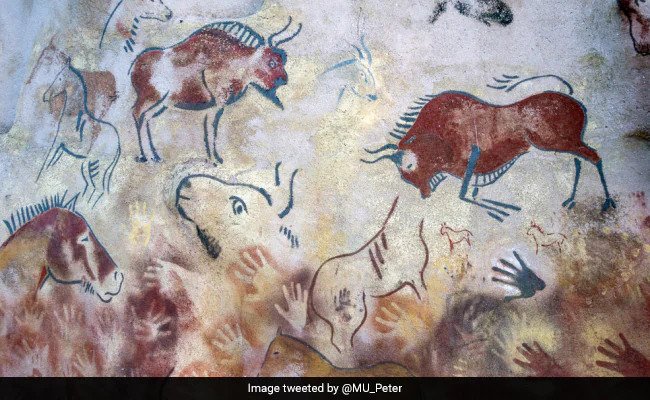Londoner solves 20,000-year Ice Age drawings mystery

Ancient cave paintings, like animal figures and handprints, are generally thought to have meanings, however, the specifics of these drawings have long eluded experts. But now, British scientists have claimed to have decoded why Ice Age hunter-gatherers drew cave paintings.
Independent researcher Ben Bacon took an interest in cave art drawings. “The meaning of the markings within these drawings has always intrigued me so I set about trying to decode them,” he told the BBC.
Mr Bacon spent hours at the British library searching for photos of cave art online and collected “as much data as possible and began looking for patterns”.
He analysed 20,000-year-old markings on the drawings and concluded that they could refer to a lunar calendar.
As his research and idea progressed, Mr Bacon reached out to academics to collaborate with them. He published a study in the Cambridge Archaeological Journal along with senior academics from Durham University and University College London (UCL), which revealed that Ice Age hunter-gatherers were using markings combined with drawings of their animal prey to store and communicate “sophisticated” information about the behaviour of species crucial to their survival at least 20,000 years ago.
In the study, the researchers explained that as the marks, found in more than 600 images on cave walls and objects across Europe, record information numerically and reference a calendar rather than recording speech, they cannot be called “writing” in the sense of the pictographic and cuneiform systems of early writing that emerged in Sumer from 3,400 BC onwards.
Instead, the team refers to them as a “proto-writing system” – pre-dating other token-based systems that are thought to have emerged during the Neolithic period by at least 10,000 years.
The researchers in particular examined a ‘Y’ sign on some paintings, which they felt might be a symbol for “giving birth” as it showed one line growing out from another.
Their study showed that the sequences record mating and birthing seasons and found a “statistically significant” correlation between the number of marks the position of the ‘Y’ sign and the months in which modern animals mate and birth respectively.
Professors Paul Pettitt of Durham University said, “This is a fascinating study that has brought together independent and professional researchers with expertise in archaeology and visual psychology, to decode information first recorded thousands of years ago.”
“The result show that Ice Age hunter-gatherers were the first to use a systematic calendar and marks to record information about major ecological events within that calendar. In turn, we’re able to show that these people – who left a legacy of spectacular art in the caves of Lascaux and Altamira – also left a record of early timekeeping that would eventually become commonplace among our species,” Mr Pettitt added.
Post a commentIn the study, the researchers showed that despite the difficulties, researchers can crack the meaning of at least some of the symbols. For Bacon, the findings had even more significance. “As we probe deeper into their world, what we are discovering is that these ancient ancestors are a lot more like us than we had previously thought,” he said. “These people, separated from us by many millennia, are suddenly a lot closer,” Mr Bacon added.